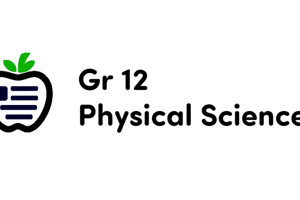Podcast
Questions and Answers
What is the standard unit of work in the International System of Units (SI)?
What is the standard unit of work in the International System of Units (SI)?
- Kilogram-meter (kg-m)
- Newton-meter (N-m)
- Joule (J) (correct)
- Calorie (cal)
Which of the following is essential for calculating work done when forces are not parallel to the direction of movement?
Which of the following is essential for calculating work done when forces are not parallel to the direction of movement?
- Techniques of tensor calculus
- Techniques of scalar multiplication
- Techniques of matrix multiplication
- Techniques of vector addition (correct)
Which of Newton's laws is most directly related to the concept of work and energy?
Which of Newton's laws is most directly related to the concept of work and energy?
- All of Newton's laws are equally relevant
- Newton's First Law (Law of Inertia)
- Newton's Third Law (Law of Action and Reaction)
- Newton's Second Law (Law of Acceleration) (correct)
What is the purpose of force diagrams, or free-body diagrams, in the context of work and energy?
What is the purpose of force diagrams, or free-body diagrams, in the context of work and energy?
In the context of lifting objects, what is the work done equal to?
In the context of lifting objects, what is the work done equal to?
What type of energy is primarily involved when throwing an object, such as a ball?
What type of energy is primarily involved when throwing an object, such as a ball?
In electrical circuits, what form of energy is converted when work is done by moving charges through a potential difference?
In electrical circuits, what form of energy is converted when work is done by moving charges through a potential difference?
Which mathematical concept is fundamental in calculating work done in various scenarios?
Which mathematical concept is fundamental in calculating work done in various scenarios?
What is the primary reason for studying work and energy in physics?
What is the primary reason for studying work and energy in physics?
In the context of work and energy, what is the significance of the concept of force?
In the context of work and energy, what is the significance of the concept of force?
What is the precise definition of 'work' in physics?
What is the precise definition of 'work' in physics?
What is the mathematical expression for work (W) in physics?
What is the mathematical expression for work (W) in physics?
Which of the following conditions is NOT necessary for work to be done in physics?
Which of the following conditions is NOT necessary for work to be done in physics?
What is the relationship between work and energy in physics?
What is the relationship between work and energy in physics?
If a force is applied to an object, but there is no displacement, how much work is done?
If a force is applied to an object, but there is no displacement, how much work is done?
Which of the following is an example of work being done in physics?
Which of the following is an example of work being done in physics?
If the angle between the force and the direction of displacement is 90°, what is the value of cos(θ) in the work equation?
If the angle between the force and the direction of displacement is 90°, what is the value of cos(θ) in the work equation?
Which of the following statements about work in physics is true?
Which of the following statements about work in physics is true?
What is the unit of work in the International System of Units (SI)?
What is the unit of work in the International System of Units (SI)?
If the force applied to an object is constant, but the displacement varies, what happens to the work done?
If the force applied to an object is constant, but the displacement varies, what happens to the work done?
Which of the following statements about the relationship between work and energy is correct?
Which of the following statements about the relationship between work and energy is correct?
In the context of lifting objects, what is the work done equal to if the object is lifted vertically?
In the context of lifting objects, what is the work done equal to if the object is lifted vertically?
Which of the following techniques is crucial for calculating work done when forces are not parallel to the direction of movement?
Which of the following techniques is crucial for calculating work done when forces are not parallel to the direction of movement?
What is the primary purpose of force diagrams, or free-body diagrams, in the context of work and energy?
What is the primary purpose of force diagrams, or free-body diagrams, in the context of work and energy?
In the context of throwing objects, such as a ball, what type of energy is primarily involved?
In the context of throwing objects, such as a ball, what type of energy is primarily involved?
Which of Newton's laws is most directly related to the concept of work and energy?
Which of Newton's laws is most directly related to the concept of work and energy?
In electrical circuits, what form of energy is primarily converted when work is done by moving charges through a potential difference?
In electrical circuits, what form of energy is primarily converted when work is done by moving charges through a potential difference?
Which of the following mathematical concepts is fundamental in calculating work done in various scenarios?
Which of the following mathematical concepts is fundamental in calculating work done in various scenarios?
If a force is applied to an object, and the object undergoes displacement in the same direction as the force, what is the value of the angle $\theta$ between the force and displacement vectors in the work equation $W = F \cdot d \cos \theta$?
If a force is applied to an object, and the object undergoes displacement in the same direction as the force, what is the value of the angle $\theta$ between the force and displacement vectors in the work equation $W = F \cdot d \cos \theta$?
What is the primary reason for studying work and energy in physics?
What is the primary reason for studying work and energy in physics?
What is the key difference between the concept of work in physics and its everyday usage?
What is the key difference between the concept of work in physics and its everyday usage?
If a force is applied to an object, but the object does not move, how much work is done according to the physics definition?
If a force is applied to an object, but the object does not move, how much work is done according to the physics definition?
What is the significance of the angle $\theta$ in the work equation $W = F \times d \times \cos(\theta)$?
What is the significance of the angle $\theta$ in the work equation $W = F \times d \times \cos(\theta)$?
If a constant force is applied to an object, and the displacement is doubled, what happens to the work done?
If a constant force is applied to an object, and the displacement is doubled, what happens to the work done?
Which of the following is an example of work being done in the context of physics?
Which of the following is an example of work being done in the context of physics?
If a force is applied to an object at an angle of 90° to the direction of displacement, what is the value of $\cos(\theta)$ in the work equation?
If a force is applied to an object at an angle of 90° to the direction of displacement, what is the value of $\cos(\theta)$ in the work equation?
Which type of energy is primarily involved when throwing a ball vertically upward?
Which type of energy is primarily involved when throwing a ball vertically upward?
In the context of lifting an object, what is the work done equal to?
In the context of lifting an object, what is the work done equal to?
In electrical circuits, what form of energy is converted when work is done by moving charges through a potential difference?
In electrical circuits, what form of energy is converted when work is done by moving charges through a potential difference?
Which mathematical concept is fundamental in calculating work done in various scenarios?
Which mathematical concept is fundamental in calculating work done in various scenarios?
What is the mathematical expression for work in physics?
What is the mathematical expression for work in physics?
What does the angle $\theta$ represent in the work equation?
What does the angle $\theta$ represent in the work equation?
Which physical quantity is defined as the capacity to do work?
Which physical quantity is defined as the capacity to do work?
What type of energy is converted when lifting an object against gravity?
What type of energy is converted when lifting an object against gravity?
Which of these is necessary for work to be done on an object?
Which of these is necessary for work to be done on an object?
If an object is moved by a force perpendicular to its direction of motion, what is the value of $\cos(\theta)$ in the work equation?
If an object is moved by a force perpendicular to its direction of motion, what is the value of $\cos(\theta)$ in the work equation?
What type of energy is primarily involved in converting electrical energy to light in a bulb?
What type of energy is primarily involved in converting electrical energy to light in a bulb?
If an object is pushed by a force but doesn't move, how much work is done based on the physics definition?
If an object is pushed by a force but doesn't move, how much work is done based on the physics definition?
What happens to work done if a force is applied to an object but there is no displacement?
What happens to work done if a force is applied to an object but there is no displacement?
What is the relationship between vectors and work in physics?
What is the relationship between vectors and work in physics?
In physics, what happens when forces act on an object according to Newton's Laws?
In physics, what happens when forces act on an object according to Newton's Laws?
Why are force diagrams essential in physics when calculating work?
Why are force diagrams essential in physics when calculating work?
Which scenario illustrates the conversion of electrical energy into other forms?
Which scenario illustrates the conversion of electrical energy into other forms?
What is the primary purpose of understanding equations in relation to work done?
What is the primary purpose of understanding equations in relation to work done?
How does lifting an object vertically affect its energy according to physics?
How does lifting an object vertically affect its energy according to physics?
What aspect of movement does Newton's Laws help explain in relation to work?
What aspect of movement does Newton's Laws help explain in relation to work?
How do force diagrams assist in understanding work done on objects?
How do force diagrams assist in understanding work done on objects?
What happens when a ball is thrown into the air regarding kinetic energy?
What happens when a ball is thrown into the air regarding kinetic energy?
Which scenario involves the conversion of electrical energy into other forms?
Which scenario involves the conversion of electrical energy into other forms?




